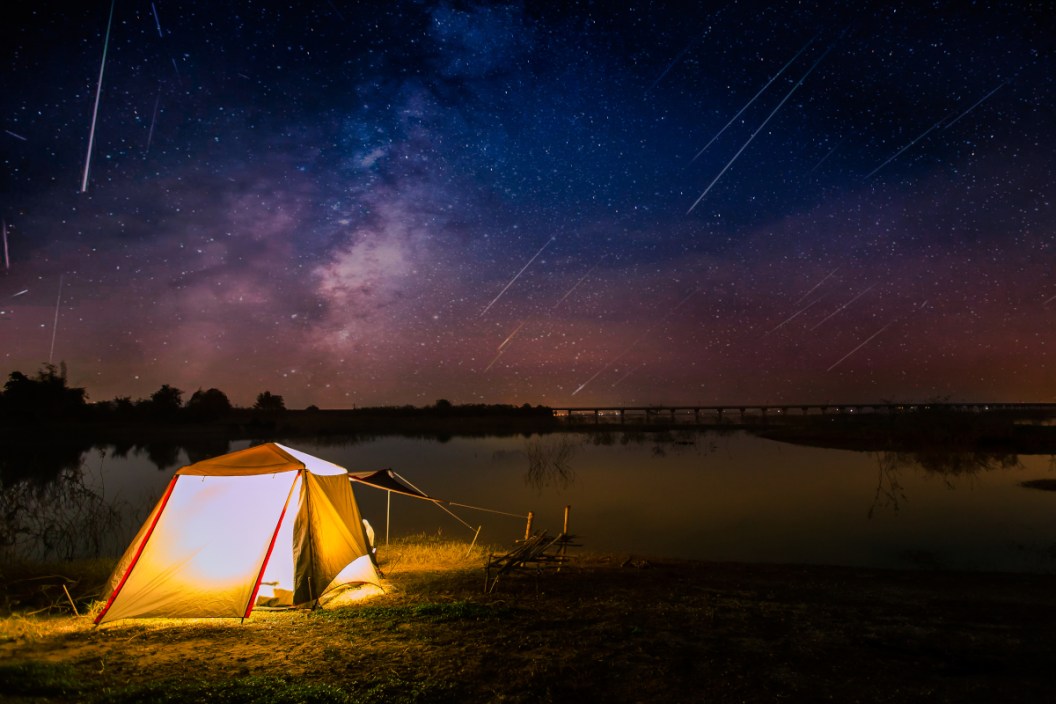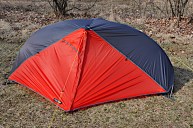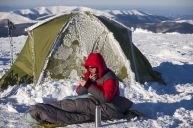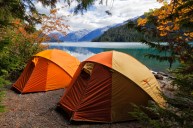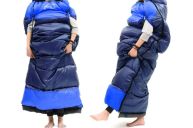Here is how to drastically improve your camping in 2020.
The New Year is finally here and that means a fresh year full of camping experiences awaits us. But before you go on that next camping trip, it's time to make some preparations.
Because even if your trips and campsites were awesome last year, there is always room for improvement.
Here are some camping tips to make those trips in 2020 the best ones ever.
Seam seal your tent
Were you woken up in the middle of the night last year to a wet sleeping bag caused by water seeping into your tent? Odds are you didn't have the tent properly sealed.
In order to get the most out of your camping gear, you must maintain it. That's why campers are advised to seal the seams to make sure the tent is waterproof. You can find seam sealer for sale anywhere camping equipment is sold.
Make sure ahead of time your tent doesn't already have factory taping. If it does, you can usually get away with just sealing the outside seams. It just helps with the waterproofing.
Now, to be clear, you shouldn't do this today unless you live in a warmer climate. That's because you need to leave the tent set up for up to 24 hours to allow it to dry for maximum effectiveness. We recommend the first warm spring day where there is no rain the forecast.
A little work on this now and you'll enjoy some of your best night's sleep ever.
Take stock of your first aid kit
Being prepared for any emergency is vital and nothing stinks more than suffering an injury in the backcountry that requires you to trek all the way back to the parking lot and your vehicle to treat it.
If you're an avid camper, odds are you used some of the supplies in your first aid kit in the last year. Take the time now to replace them.
Some kits include things like aspirin or other headache medications. Check the expiration dates. Replenish bandages or iodine tablets. See if you can squeeze one more item inside.
Making sure your kit is good to go now in the winter months may save you a ton of headaches later. Literally.
Start planning your summer trips now
Maybe you're making a New Year's resolution to camp more in 2020. That's a great goal and you shouldn't just wait for the warmer months to start planning. Many state and National Parks are likely booking up campsites right now. For some backpacking areas, you may need to apply for the permits months in advance.
Save yourself some headaches by doing your research right now and planning your trips down to the last detail. This is a great thing to do on a cold, snowy day where you can't leave the house anyway. Sometimes with a little research, you can find spots that are true hidden gems that the crowds haven't yet discovered!
I recommend using Google Maps and their street view in your research. It's an amazing resource for locating overlooked parks and locations. Your friends and family will be amazed with the awesome experience you give them by doing the homework ahead of time.
Also, don't be afraid to schedule your trips outside of peak times. Instead of arriving at a popular campground on a Friday night, try arriving Monday morning. Instead of waiting until June or July, plan your trip for late April or push it back until the first week of October.
By scheduling at these times, you have a better chance of an empty campground away from the crowds.
Pick up new gear (while it's cheap!)
Camping gear is expensive, and you don't really want to wait until a few days before your trip to buy new gear. Whether you're in the market for a new air mattress, water bottle, some cookware, a fire starter or new headlamp, now is the time to buy.
If you're lucky, you may even be able to catch some items still on clearance sale that the big box stores like Walmart have been trying to get rid of since the fall. Buying it now also gives you a chance to fully test the gear and make sure it is what you are looking for.
Because buying sub-par gear that breaks the first time you use it really sucks when you're 10 miles from the nearest road. It's best to find any flaws now.
Investing in new gear means clothing too. Maybe you need some new socks to help keep warm on those frosty nights. Or maybe you need a new sweater or other outerwear. And remember, nothing ruins a backcountry camping trip quite like an uncomfortable pair of hiking boots. Now is a good time to shop for some new ones.
Prepare some fire starters
If you want to start saving some money for your trips now, there are a few camping hacks you can use to help in that regard. One of them is preparing fire starters.
All you need are some toilet paper tubes and dryer lint. Just stuff the tubes with the lint, and you've got yourself an easy-to-light fire starter.
If you want to get fancy, you can add some wax or wax paper to make them even more effective.
If you start making some of these now, you should have plenty on hand for the first camping trip of spring. You save some money for your trip and you recycle what is essentially garbage at the same time. Win-win!
Bring a tarp
One of the most inexpensive, but useful DIY pieces of camping gear you can bring with you is a tarp. It amazes me how many people don't think of bringing one. One thing that really annoys me while camping is drying out a tent after a rain. A tarp thrown over your tent will help keep it safer from the damp conditions and shorten that drying time.
Alternatively, a tarp can be used as a makeshift awning or to cover a hole if you're unfortunate enough to tear one in an RV's awning. A tarp is also useful for covering up all your camping gear you're not going to keep in your tent. Stuff like camp stoves, chairs, tables and even firewood can all get moisture protection.
Even if there isn't rain in the forecast, a tarp usually doesn't take up much room. It's better to have it and not need it than need it and not have it.
Keeping cool
Most people like to schedule their camping trips in the middle of summer. Which is fine, except for when you run into sweltering heat. So, how can you improve a trip like that? There are a few tips and tricks for hot or humid weather beyond just throwing a fan in your tent.
One hack is to drape a damp cloth around your neck or over your forehead. You can also try a swim in a cool lake or river, or if they're available, a shower to cool you off before bed. These hacks help drop your body temperature before turning in, making it easier to fall asleep. If rain isn't in the forecast, take the rain fly off your tent and let nature's cool breezes be your air conditioning.
Plenty of sleeping bags out there are made for warmth in cooler conditions, but you should also consider purchasing a lighter sleeping bag specifically for the hot summer months. You might also consider a reflective blanket or foil sun shield like you might buy for a car window to reflect the sun's rays and drop the temperature inside your tent.
Tips for keeping gear dry
One big way to improve your camping trips is to keep yourself and your gear dry. Keeping yourself dry is usually simple enough with the proper raingear. But what about all your other equipment? It can be tough, especially if you in the backcountry with no shelter in sight to get out of it.
You can buy dry bags in many camping stores, but to be honest, trash bags and even baggies will work just as well for keeping clothing and vital electronics, like your smartphone, dry in your bag.
For your cookware and other utensils, try packing them with silica gel packs to help prevent rusting. If your clothing does get wet, pack along some clothespins and a short length of rope or cord for a makeshift clothesline.
Odds are your shoes or hiking boots are probably going to get wet. There are few different things you can try other than drying them around the campfire.
Stuff the inside with dry towels, clothing or newspaper. If you're in a campground with access to electricity, a fan helps significantly in this regard.
My last tip for keeping your stuff dry is to look outside the box for waterproof containers. Gasket seal plastics designed for keeping food fresh are great for keeping electronics and other small devices dry and organized. I've also used metal and plastic ammo cans for this same purpose in the past. They are light weight, but you can be sure your cameras or other expensive gear are safe from harm inside.
Products featured on Wide Open Spaces are independently selected by our editors. However, when you buy something through our links, we may earn a commission.
For more outdoor content from Travis Smola, be sure to follow him on Twitter and check out his Geocaching and Outdoors with Travis YouTube channels.
NEXT: CAN-AM'S 2020 DEFENDER LINEUP CHANGES THE LANDSCAPE FOR HUNTERS, RANCHERS
WATCH
